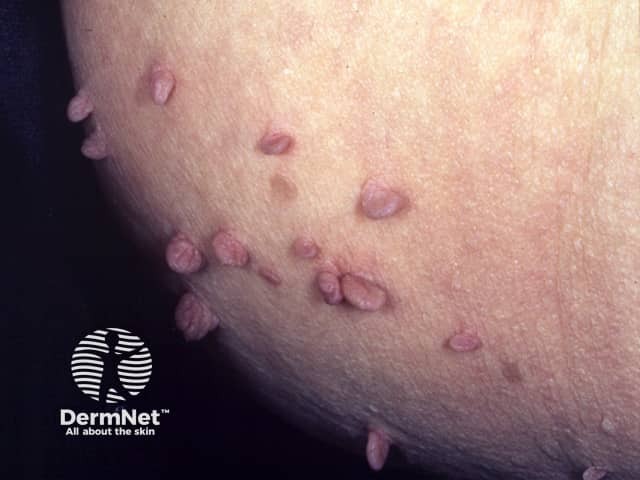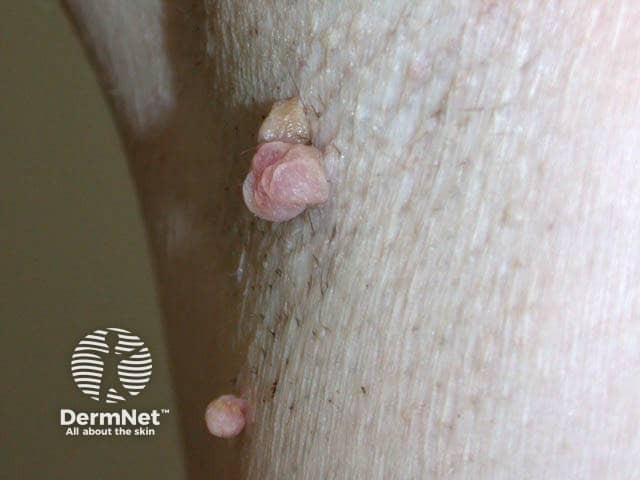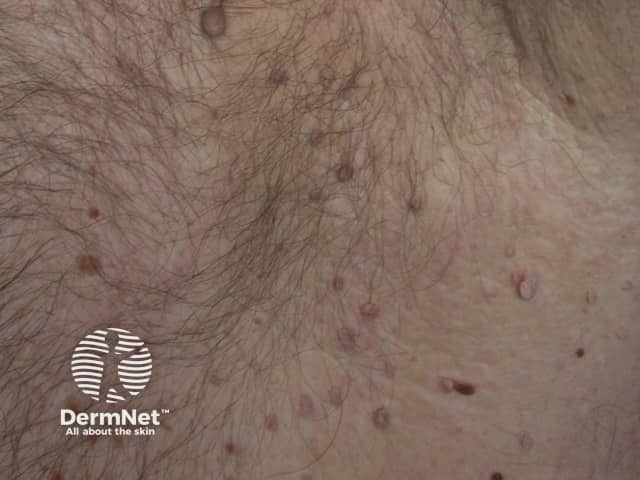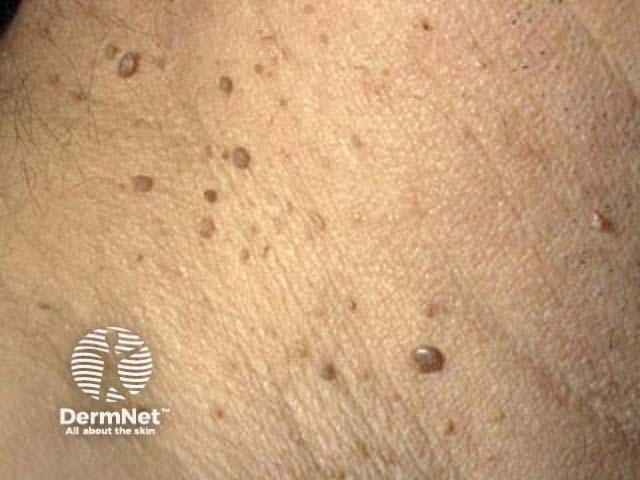Main menu
Common skin conditions

NEWS
Join DermNet PRO
Read more
Quick links
Author: Dr Amanda Oakley MBChB FRACP, Dept of Dermatology Waikato Hospital, Hamilton, New Zealand, 2004.
A skin tag is a common soft harmless lesion that appears to hang off the skin. It is also described as:
Skin tags develop in both men and women as they grow older. They are skin coloured or darker and range in size from 1mm to 5cm. They are most often found in the skin folds (neck, armpits, groin). They tend to be more numerous in obese persons and in those with type 2 diabetes mellitus.

Skin tags

Skin tag

Skin tag
Skin tags are made up of loosely arranged collagen fibres and blood vessels surrounded by a thickened or thinned-out epidermis.
Seborrhoeic keratoses, viral warts or molluscum contagiosum may resemble skin tags.

Seborrhoeic keratosis

Seborrhoeic keratosis

Molluscum contagiosum
It is not known what causes skin tags. However, the following factors may play a role:
Skin tags can be removed for cosmetic reasons by the following methods: